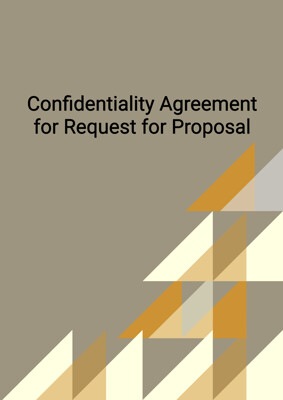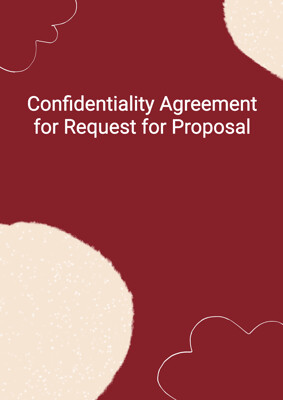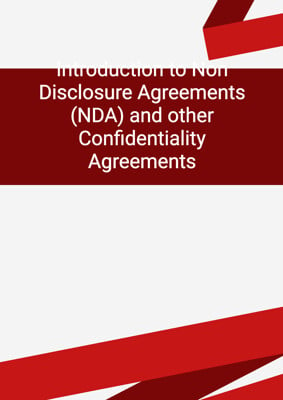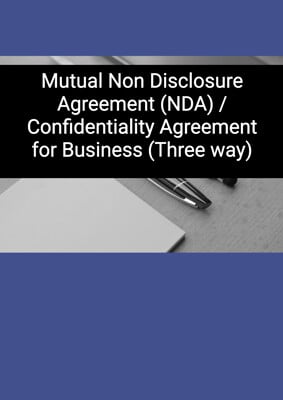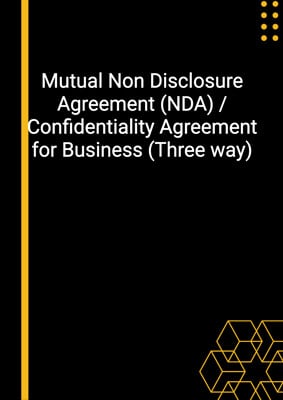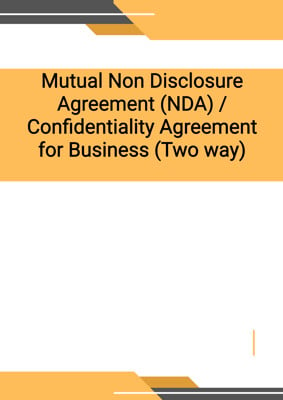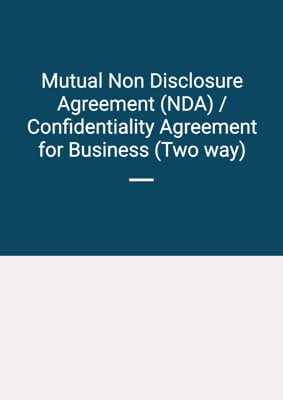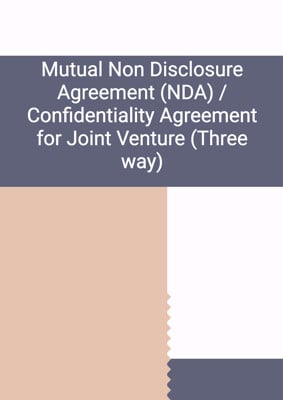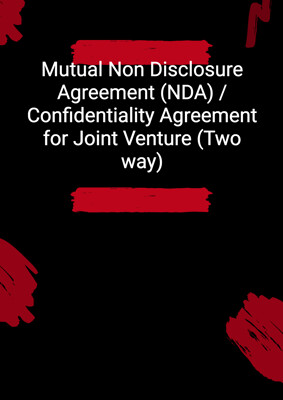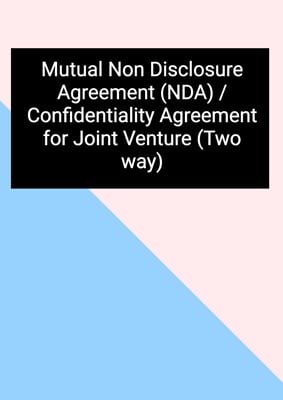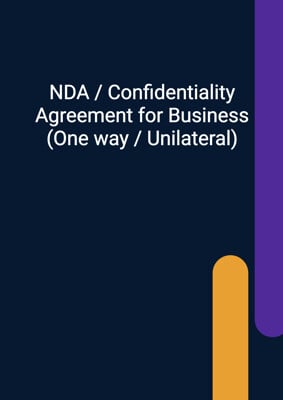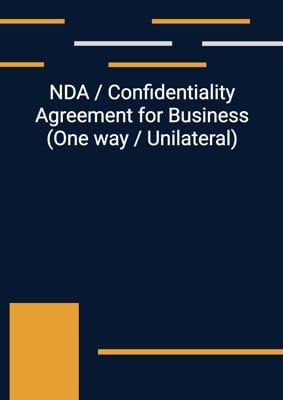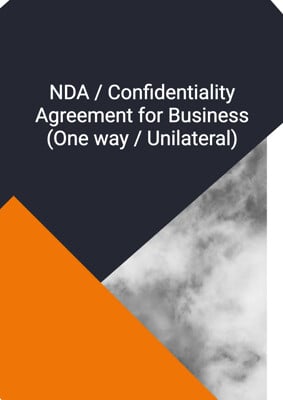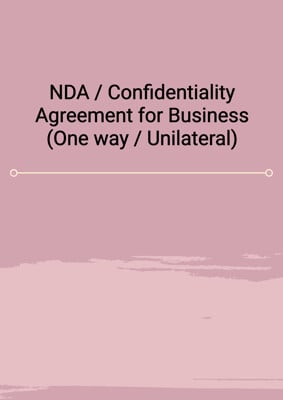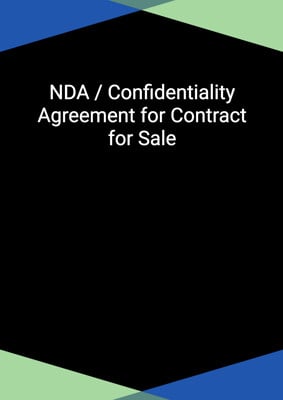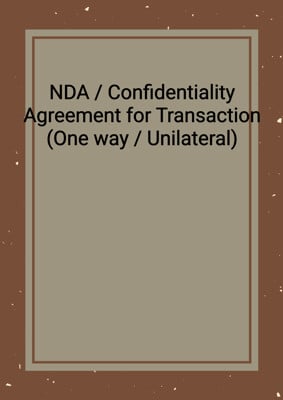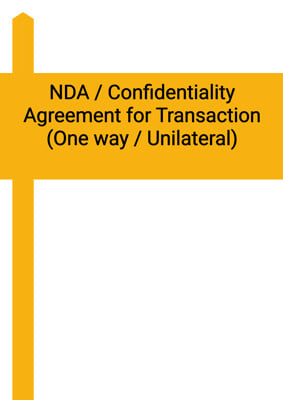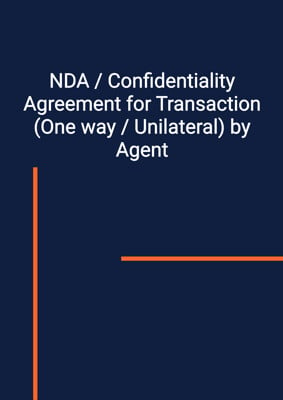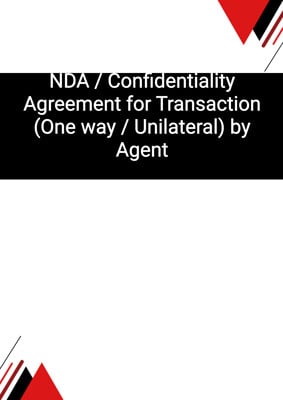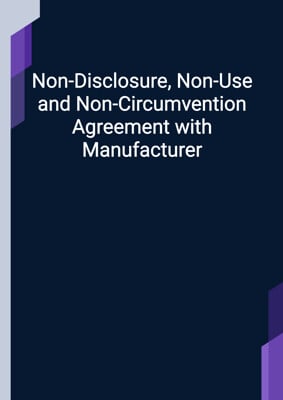
NDA / Confidentiality Agreement for Transaction (One way / Unilateral) by Agent
Discloser / Provider
One way Non Disclosure agreement for Discloser to reveal detail of the Transaction to the Disclosee by an Agent (e.g. bank or securities firm) of the Principal. It imposes a unilateral obligation of confidentiality on the party who receives the information. This is drafted in favour of the Discloser.
How to Tailor the Document for Your Need?
01
Create Document
Fill in the details of the parties. You can click the "Fill with Member’s Information" button to complete it with information saved to your account.
02
Fill Information
Please fill in any additional information by following the step-by-step guide on the left hand side of the preview document and click the "Next" button.
03
Get Document
When you are done, click the "Get Document" button and you can download the document in Word or PDF format.
04
Review Document
Please get all parties to review the document carefully and make any final modifications to ensure that the details are correct before signing the document.
Document Preview
Document Description
The NDA / Confidentiality Agreement for Transaction (One way / Unilateral) by Agent is a legal document that establishes a confidential relationship between the discloser and the disclosee. The document is important as it ensures that any confidential information shared between the parties remains protected and cannot be disclosed to third parties without proper authorization.
The entire document is divided into several sections, each serving a specific purpose. The first section, titled 'Interpretation,' provides definitions for key terms used throughout the agreement. This ensures that both parties have a clear understanding of the terminology used.
The second section, titled 'Obligations of Confidentiality,' outlines the responsibilities of the disclosee in maintaining the confidentiality of the information shared by the discloser. It includes provisions such as using the information exclusively for the agreed purpose, not copying or reproducing the information without prior approval, and not storing the information in an externally accessible computer or electronic information retrieval system.
The third section, titled 'Confidentiality Measures,' specifies additional measures that the disclosee must take to maintain the confidentiality of the disclosed information. These measures include restricting access to approved representatives, keeping information separate from other documents and records, and implementing appropriate security measures to protect against theft or unauthorized access.
The fourth section, titled 'Excepted Information,' outlines certain circumstances where the obligations of confidentiality do not apply. This includes information that is already publicly available, previously known to the disclosee, or disclosed by a third party with the right to do so.
The fifth section, titled 'Return of Information,' requires the disclosee to return or destroy all documents and materials containing the information upon request from the discloser. However, the obligations of confidentiality continue to apply even after the completion of the purpose or the return or destruction of the documents and materials.
The sixth section, titled 'Disclaimer and Warranty,' clarifies that the discloser and its connected persons do not make any representations or warranties regarding the accuracy, reliability, or completeness of the information. It also states that the discloser and its connected persons shall not be liable for any use of the information by the disclosee or any other person.
The seventh section, titled 'Confidentiality,' emphasizes the importance of keeping the existence and nature of the agreement confidential. It prohibits the disclosee from revealing the negotiations or any information related to the negotiations to any person other than approved representatives.
The eighth section, titled 'Remedies,' acknowledges that damages may not be an adequate remedy for a breach of the agreement and grants the discloser the right to seek injunction, specific performance, or other equitable relief.
The ninth section, titled 'Waiver,' clarifies that a waiver of any provision or failure to perform a provision does not constitute a waiver of any other or further failure.
The tenth section, titled 'Assignment,' prohibits the disclosee from assigning any rights or obligations under the agreement.
The eleventh section, titled 'Entire Agreement,' states that the agreement represents the entire agreement between the parties and supersedes any previous agreements or understandings.
The twelfth section, titled 'No License,' clarifies that the agreement does not grant any rights to either party under any intellectual property of the other party.
The thirteenth section, titled 'Governing Law and Jurisdiction,' specifies the governing law and jurisdiction for any disputes arising from the agreement.
The fourteenth section, titled 'Notices and Service,' outlines the requirements for giving notices under the agreement, including the methods of delivery and the addresses of the parties.
The fifteenth section, titled 'Rights under Contracts for Third Parties,' acknowledges that the principal or its connected persons have the right to enforce the terms of the agreement. However, other third parties do not have the right to enforce the terms unless agreed upon by the parties.
In conclusion, the NDA / Confidentiality Agreement for Transaction (One way / Unilateral) by Agent is a comprehensive document that establishes the obligations of confidentiality between the discloser and the disclosee. It covers various aspects such as definitions, confidentiality measures, exceptions, remedies, and governing law. By following the provisions outlined in the agreement, both parties can ensure the protection of confidential information and maintain a secure business relationship.
How to use this document?
1. Review the entire agreement to understand its purpose and scope.
2. Identify the key terms and definitions provided in the 'Interpretation' section.
3. Understand the obligations of confidentiality outlined in the 'Obligations of Confidentiality' section, including the exclusive use of information for the agreed purpose and the restrictions on copying and storing the information.
4. Familiarize yourself with the additional confidentiality measures specified in the 'Confidentiality Measures' section, such as restricting access to approved representatives and implementing appropriate security measures.
5. Take note of the circumstances where the obligations of confidentiality do not apply, as outlined in the 'Excepted Information' section.
6. Be aware of the requirements for returning or destroying information in the 'Return of Information' section.
7. Understand the disclaimer and warranty provided in the 'Disclaimer and Warranty' section, which clarifies the limitations of liability for the discloser and its connected persons.
8. Keep the existence and nature of the agreement confidential, as stated in the 'Confidentiality' section.
9. Familiarize yourself with the available remedies in case of a breach, as outlined in the 'Remedies' section.
10. Ensure compliance with the provisions regarding notices and service in the 'Notices and Service' section.
11. Understand the rights of the principal or its connected persons to enforce the terms of the agreement, as stated in the 'Rights under Contracts for Third Parties' section.
12. Seek legal advice if needed to fully understand the implications and enforceability of the agreement.
13. Regularly review and update the agreement as necessary to ensure its continued effectiveness and relevance to the business relationship.
Not the right document?
Don’t worry, we have thousands of documents for you to choose from:

